The Gist
- Community bonding. Brands build loyalty and retention by fostering online communities for shared interests.
- Customer voice amplified. Online platforms enable direct feedback, shaping products and enhancing satisfaction.
- Peer-to-peer support. Communities offer a space for customers to find solutions, reducing service pressure.
A throwback to the beginnings of the internet, online communities have emerged as a powerful tool for bolstering customer retention and engagement. These digital platforms not only offer a space for customers to connect over shared interests and experiences but also enable brands to build a sense of belonging, loyalty and continuous interaction. Through the collective power of these communities, businesses are transforming casual customers into loyal advocates and collaborators in the brand's journey.
This article will examine how online communities, through building dialogue, support, and shared learning, are resurfacing as a powerful collaborative tool for customer engagement.
Introduction to Online Communities
The concept of brand success and customer engagement has undergone a significant transformation, which has both contributed to and been affected by the rise of online communities. These platforms have become more than just a meeting ground for like-minded individuals; they are integral to how brands cultivate loyalty, foster customer engagement and differentiate themselves in a crowded marketplace.
Online communities provide a unique space where customers can share their experiences, challenges, and solutions, not just with each other but with the brands they patronize. Additionally, customers use communities for self-help, to find solutions to the problems they encounter with a brand’s products or services. This interaction goes beyond the transactional nature of traditional customer service, offering a sense of belonging and a deeper connection to the brand's values and mission.
Heather Foeh, senior director of customer marketing & community at 6sense, an ABM platform provider, told CMSWire that a thriving community allows customers to co-own the brand and shape their shared experience. "When a community grows organically, it becomes a vibrant tapestry, with each member adding their unique threads to create something truly special,” said Foeh. “This analogy beautifully captures the interconnectedness and strength of a strong community."
The significance of online communities in enhancing customer retention cannot be overstated. They serve as a vital channel through which brands can listen to and learn from their customers, thereby aligning their products and services more closely with customer needs and expectations. By engaging directly with their communities, brands gain invaluable insights into customer preferences, pain points and potential areas for innovation. These communities also provide a platform for customers to become brand advocates, sharing their positive experiences and influencing others in their network. This not only amplifies the brand's reach but also reinforces customer trust and loyalty.
Foeh said that online communities are transforming traditional customer engagement models. “Creating space for our customers to connect, learn from each other, and share ideas, allows them to be in charge of their own experience on their timetable,” said Foeh. “This is about enriching the old one-to-one model of a customer just speaking with their customer success manager.” Foeh explained that customers now have the opportunity to grow their skills from the much wider pool of knowledge of their peers as well.
Related Article: Tips to Build a Highly Engaged User Community
The Rise of Online Communities
The phenomenon of online communities is not merely a product of the digital age alone; its roots can be traced back to the early days of the internet, where dial-up bulletin boards, and later, Usenet newsgroups (shown below) and discussion forums formed the basis of digital interaction. These early iterations provided a glimpse into the potential of digital spaces for bringing people together around common interests or issues.
Mark Gadala-Maria, co-founder and CEO of Post Cheetah, an AI-driven SEO platform provider, told CMSWire that be it social networking sites (Facebook, Reddit, X, Instagram) or a customized company forum, online communities have made revolutionary changes in customer retention and engagement. "Rather than having physical meetings to gain information about clients and manually putting them on CMS, the latest data analytics software can be connected and directed to social media handles, and the marketing team can get real-time analysis about buying behavior, payment methods, and expectations," said Gadala-Maria.
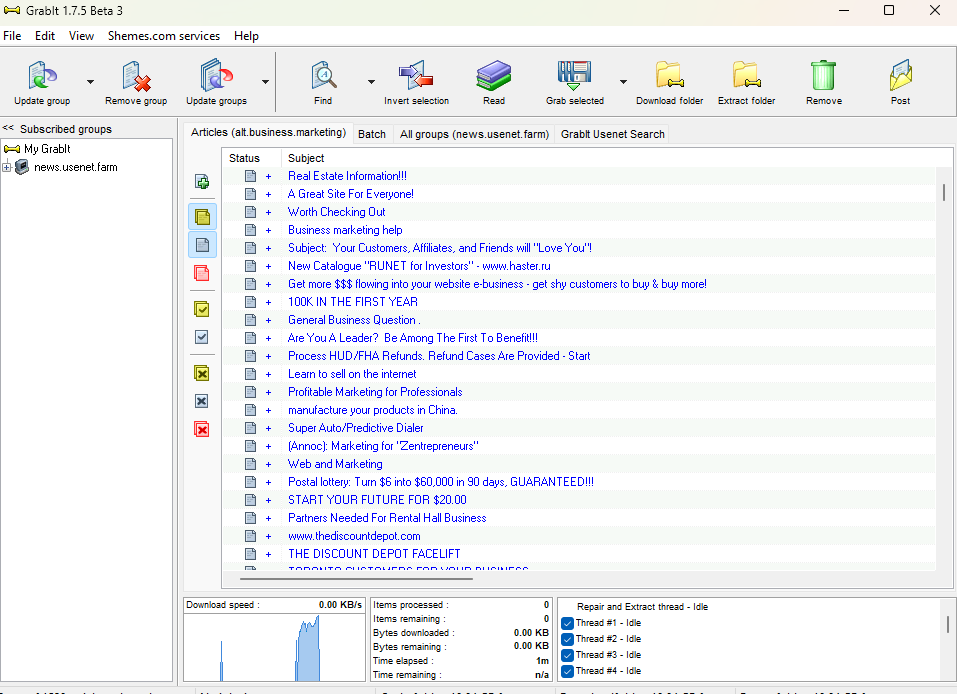
Over decades, as technology advanced and social media platforms emerged, online communities significantly evolved. This evolution was marked by an increased emphasis on interactivity, multimedia content, and real-time communication, making these communities more vibrant and engaging than ever before. From community discussion forums, to Reddit groups (subreddits), to Facebook groups, online communities provided places for people to engage with others about their hobbies, passions, professions, and finally, the products and services they regularly used. This opened up an opportunity for brands to create a community presence that would allow their customers to directly communicate with them, as well as their other customers.
This created a shift from traditional customer service to community-driven engagement and represented a significant change in how businesses approach customer relationships. Traditionally, customer service was a one-to-one interaction, often reactive and limited to addressing specific issues or queries. However, with the rise of online communities, the paradigm shifted toward a more proactive, many-to-many model of engagement.
In these digital spaces, customers not only seek solutions to their problems but also share experiences, offer advice, and provide feedback directly to the brand and each other. This has allowed businesses to transition from being mere providers of products or services to becoming facilitators of an interactive community experience. NikeTalk, pictured below, debuted in 1999, and allows Nike customers and fans to discuss their favorite Nike products, becoming a central hub for all things Nike.
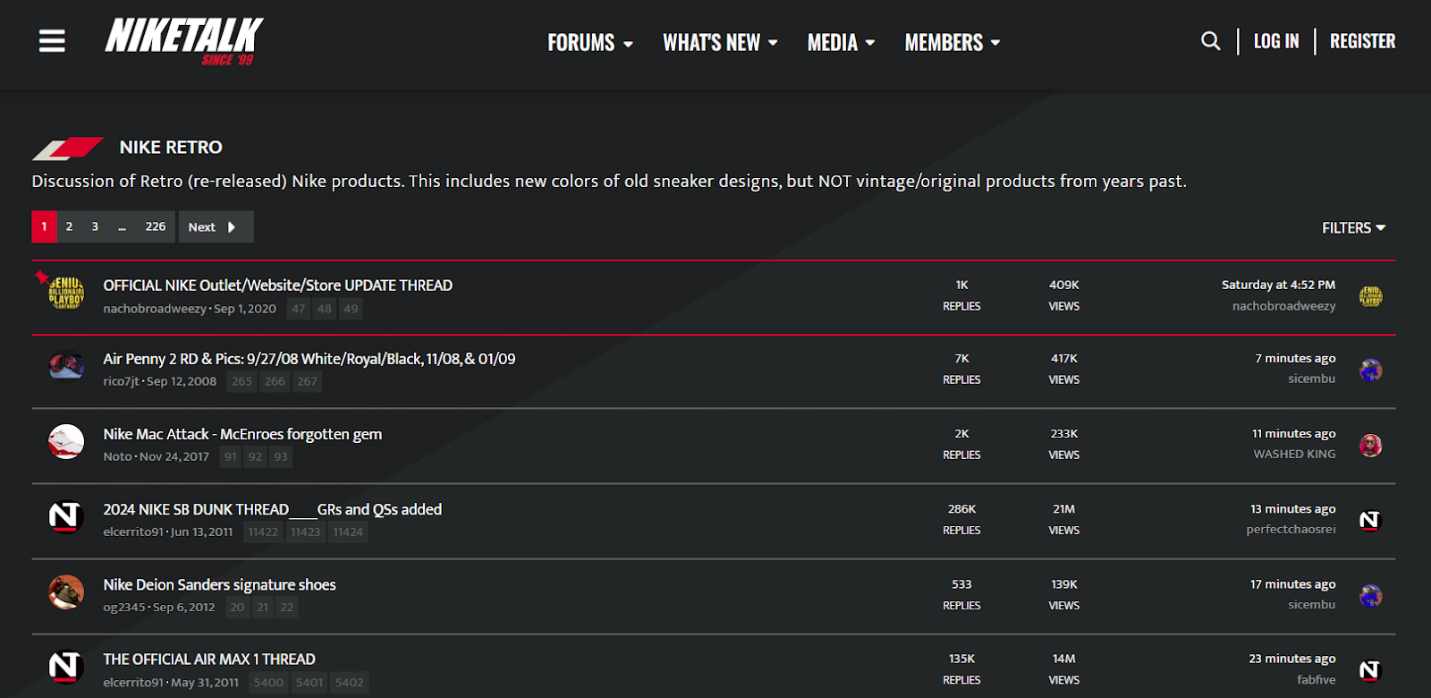
This transition underscores a broader trend toward valuing and leveraging customer input, recognizing that the collective wisdom of the community can drive improvements in products, services and overall customer satisfaction. It also reflects a move toward a more transparent and authentic form of brand communication, where businesses can engage openly with customers in a shared space.
Related Article: Want to Build a Customer Community? Here's How to Get Started
Benefits of Online Communities for Brands
Online communities provide many opportunities for brands, ranging from enhancing customer loyalty, providing solutions to customer service issues and providing valuable feedback directly from the customers themselves. These digital communities allow brands to cultivate a sense of belonging among their customers, building a community that's engaged not just with products or services but also with each other. This sense of belonging is crucial for building long-term brand loyalty, as customers feel more connected and invested in the brand's success. The Salesforce subreddit, shown below, is a place where Salesforce users come together to ask questions of each other, and just enjoy being around other Salesforce users.
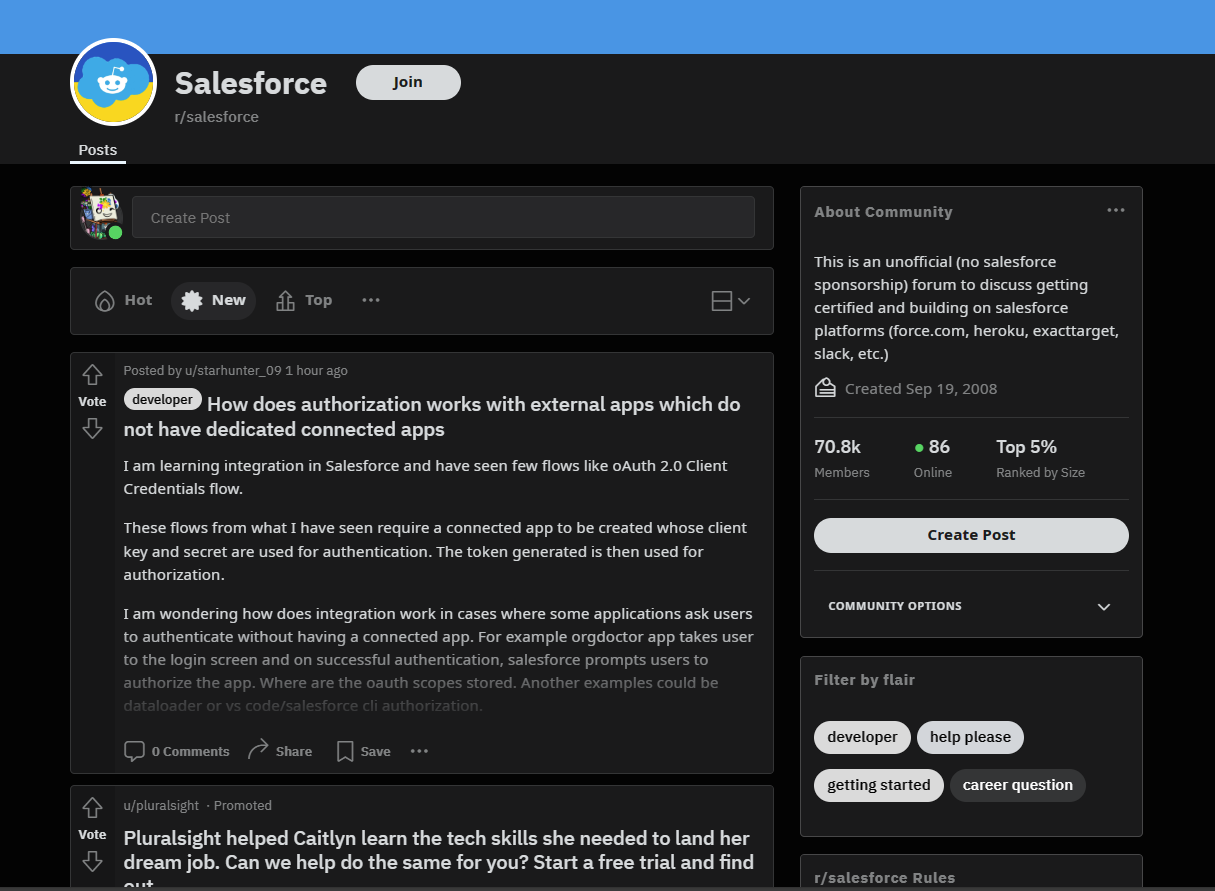
Direct interaction and feedback from the community also play a significant role in enhancing customer engagement. Through these online communities, customers can voice their opinions, suggestions, and concerns, providing brands with real-time insights into their audiences' needs and preferences. This feedback loop can lead to more informed decisions, product improvements, and personalized marketing strategies, ultimately enhancing the customer experience.
Lindsay Sanchez, CMO at Khoros, a digital customer engagement platform provider, told CMSWire that online brand-owned communities go beyond static FAQs and offer robust, personalized digital forums for customers to find resolutions to their customer service issues quickly, connect with like-minded peers, and access engaging and educational content. “By developing a platform that increases online community logins, posts, unique visitors, service request resolution rates, and customer satisfaction scores, brands can create a better customer experience and drive loyalty,” suggested Sanchez.
The Honda Ridgeline subreddit, shown below, is a place where Honda Ridgeline owners can display new accessories, find solutions to problems they are having, or simply chat with other Ridgeline owners.
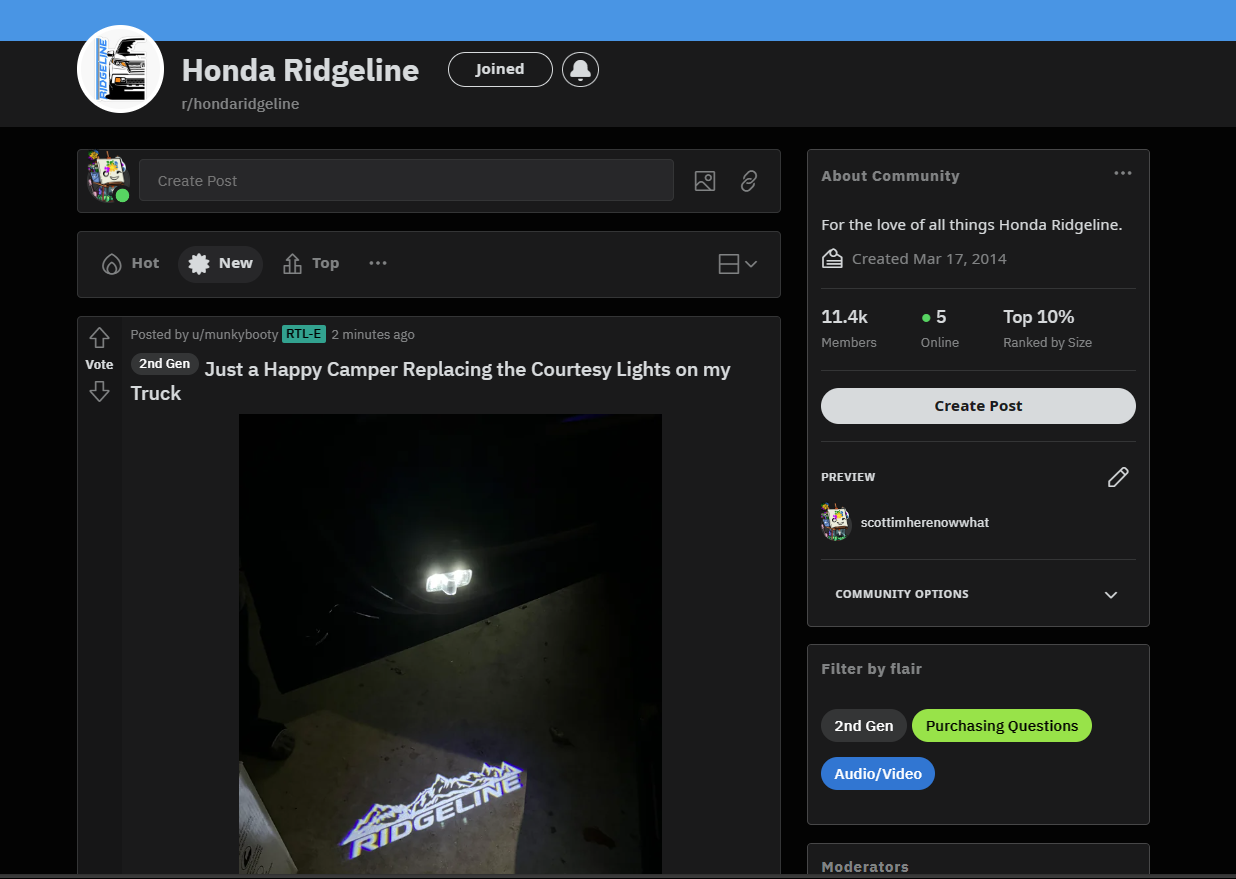
In addition, online communities empower customers to find solutions and support among themselves, often facilitating a more efficient resolution to their problems. This peer-to-peer support system not only reduces the pressure on traditional customer service channels but also enables customers to control their own narrative, sharing their experiences and solutions in a way that's authentic and relatable to others within the community.
Sanchez said that customers need effective and rapid service, with 86% expecting a response to a question or complaint within one day, while 39% expect a response within one hour, according to Khoros’ Brand Confidence Guide. “By providing robust self-service capabilities, digital communities empower customers to solve their specific challenges quickly and effectively without being passed around from one customer service agent to another with outdated hold music chipping away at brand affinity,” said Sanchez. “Customers prefer to self-service their problems, as the Harvard Business Review found that ‘81% of customers will attempt to take care of issues themselves before reaching out to a live representative.’”
Several case studies highlight the success of brand communities in driving engagement and loyalty. For instance, Sephora’s Beauty Insider Community, shown below, offers a space for beauty enthusiasts to discuss products, share makeup tips, and participate in challenges, deepening their engagement with the brand.
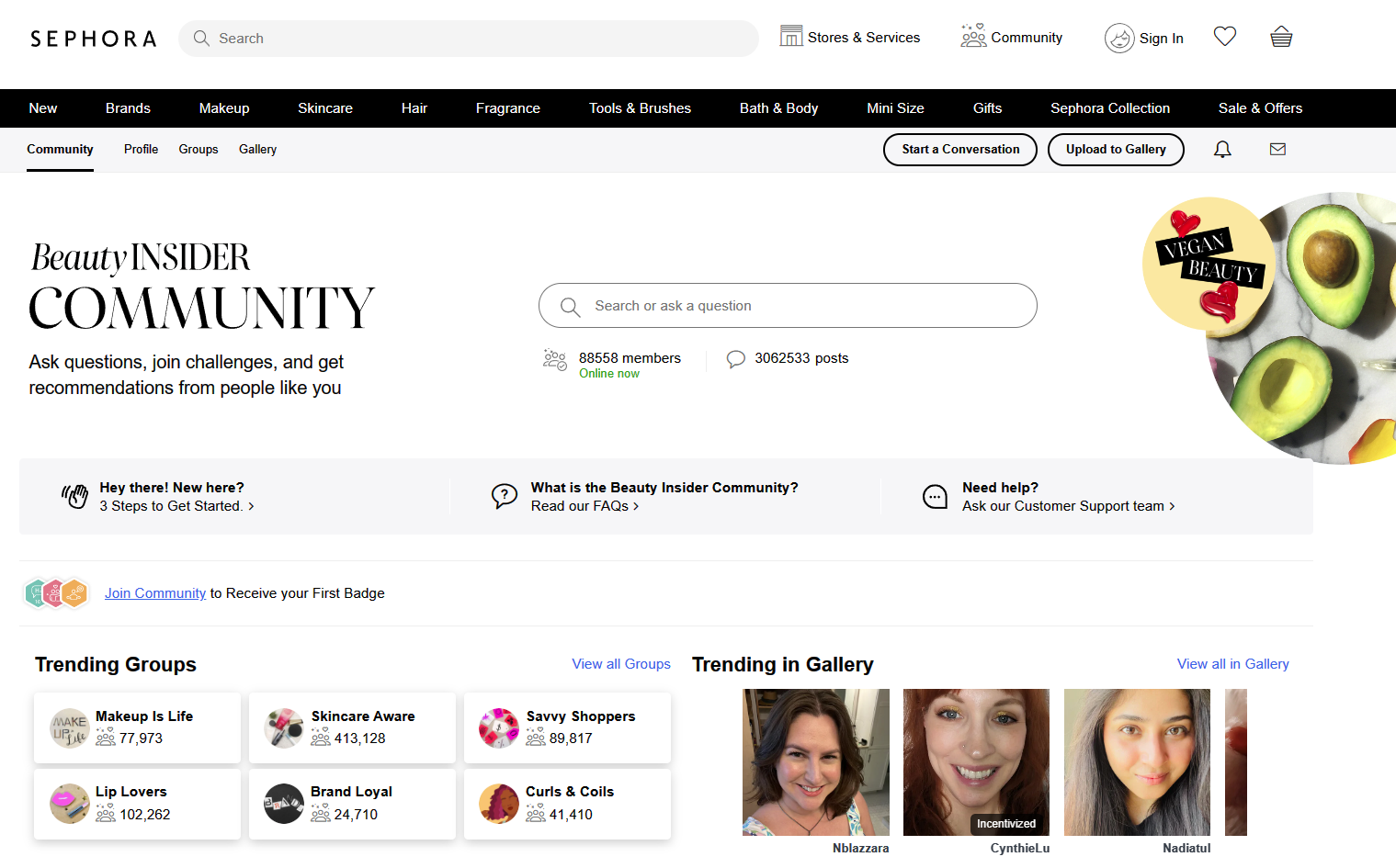
Similarly, LEGO’s Ideas platform, shown below, invites fans to submit their designs, vote on others' creations, and even see their ideas become official LEGO sets, fostering a highly engaged and creative community.
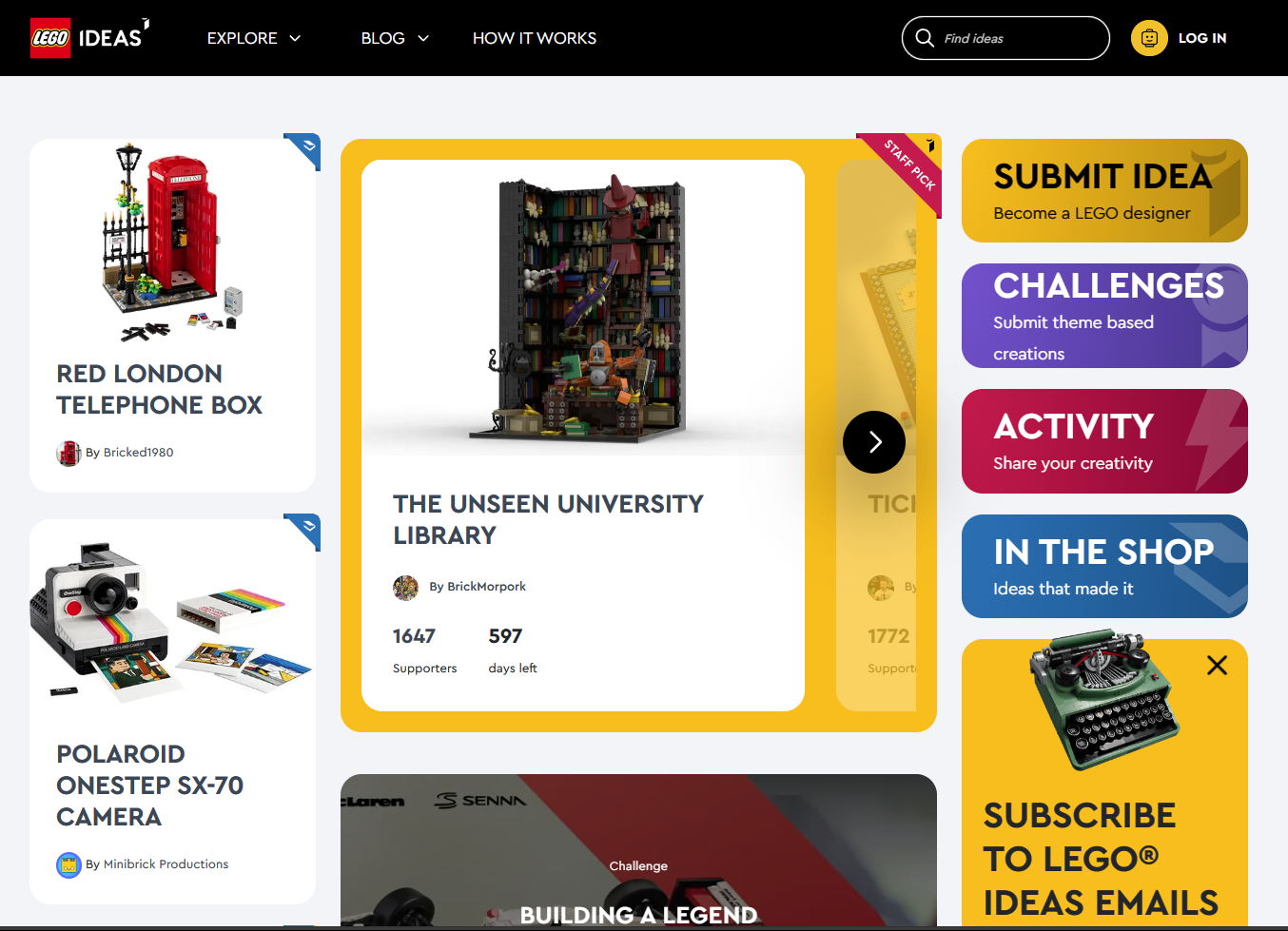
“Online communities span across platforms to encapsulate any online forum for like-minded individuals to come together and discuss common interests,” explained Sanchez. “While there are benefits and drawbacks to the various channels these can exist on, an online brand-owned community differs because it is hosted exclusively on the company’s website. These brand-owned communities stand apart by empowering brands to influence messaging and customer experiences without being subjected to unexpected costs or changing algorithms,” said Sanchez, adding that with this higher level of ownership, companies can optimize communities to best meet their specific audience’s needs and fulfill their core mission.
Strategies for Creating and Nurturing Online Communities
Creating and nurturing online communities involves strategic steps that start from understanding a brand's core values and audience to building active engagement and leveraging insights for continuous improvement. “To create an effective online brand-owned community, companies must consider their audience and go beyond a one-dimensional chat forum or FAQ page by providing easy access to integrated, self-service capabilities, enticing engagement opportunities, and robust gamification to further encourage and reward participation,” said Sanchez.
To initiate a vibrant brand community, it's essential to clearly define the community's purpose and goals. This clarity helps in creating a space that aligns with a brand's values and meets the expectations of its audience. A focused approach on a small number of goals helps in creating value for both the brand and the community members. Key Performance Indicators (KPIs) should be established to measure the success of the community against these goals.
It's also crucial to understand the fundamental factors that define a sense of community, such as membership, influence, integration, and shared emotional connection, which are timeless and apply regardless of the platform used. “Having a multitude of subtopics ensures that everyone can address their niche challenges in addition to creating even more close-knit sub-communities, particularly for global brands that serve customers across different languages,” said Sanchez. “For example, cybersecurity leader Palo Alto created multiple translation microsites to cater to non-English speaking users in the Asia-Pacific region.”
Maintaining active and positive community interaction requires direct communication with customers, which facilitates not only sales and customer service inquiries but also product feedback. Brand communities serve as a forum for testing ideas and gathering feedback from the core customer base before making critical product decisions. They can attract new customers, build trust and enhance customer loyalty through grassroots evangelism.
Adding contests, giveaways, badges, and awards is another way that brands keep customers engaged in community forums. “Incorporating engaging experiences like Ask-Me-Anythings, sweepstakes, community conversation prompts, and proactive informative content creates an educational and entertaining space for individuals to connect with like-minded peers,” said Sanchez.
Forward-thinking brands have also found that by encouraging employees to be a part of the brand community, they play a larger role in fostering loyalty and enhancing customer engagement within the forums. Yasmeen Coning, founder and CIO & Global Partner at Ogilvy Consulting at Ember, told CMSWire that she has witnessed firsthand the transformative power of integrating Employee Experience (EX) with Customer Experience (CX) through the strategic use of online communities. "We’ve discovered that the key to building a successful brand in this digital era extends beyond just fostering customer communities; it involves creating an environment where employees are equally engaged and invested in the brand's journey," said Coning.
Challenges in Managing Online Communities
Managing online communities presents a unique set of challenges that require careful navigation and strategic foresight. Common obstacles include maintaining engagement in the face of dwindling activity, ensuring the relevance and quality of content, and managing the diverse expectations of community members. Additionally, when issues have escalated past mods and admins, community managers are often faced with the delicate task of handling negative feedback and resolving conflicts, which can significantly impact the community's health and vibrancy if not addressed appropriately.
Addressing these challenges starts with creating clear community guidelines that outline acceptable behaviors and the process for dealing with violations. These guidelines serve as a foundation for creating a positive, respectful environment. When dealing with negative feedback, community managers must respond promptly and constructively, showing that the brand values its customers' opinions and is committed to improving. Transparency and openness in communication can turn negative feedback into an opportunity for growth and deepen trust within the community.
Conflict resolution within online communities requires a nuanced approach. Strategies include private discussions with involved parties to understand the issues fully and find a mutually acceptable resolution. Additionally, promoting a culture of empathy and understanding among community members can help prevent conflicts from escalating.
Measuring the Impact of Online Communities on Customer Retention
Measuring the impact of online communities on customer retention involves focusing on key metrics that assess community engagement and loyalty. These metrics provide insights into how well the community meets its goals, including building customer loyalty, providing support, and enabling direct feedback for product development and improvement. Key metrics for assessing community engagement and loyalty include:
- Customer Retention Rate: This metric measures the percentage of customers who remain engaged with the brand over time. It's essential for understanding the effectiveness of the community in maintaining long-term relationships with customers.
- Engagement Rate: Tracks how actively members participate in the community through posts, comments and other interactions. High engagement rates indicate a vibrant, valuable community that keeps members returning.
- Net Promoter Score (NPS): An indicator of customer loyalty, NPS measures how likely members are to recommend the community or brand to others. A high NPS suggests strong customer satisfaction and loyalty.
- Customer Satisfaction Score (CSAT): Directly measures customer satisfaction with the community experience. High CSAT scores can correlate with higher retention rates.
- Customer Lifetime Value (CLV): Assesses the long-term value generated from community members. By measuring the revenue generated by community members over their entire relationship with the brand, businesses can better understand the impact of the community on overall profitability and sustainability.
Other tools for measuring the impact of community forums include:
- User Behavior Analytics: Using user behavior analytics tools to gain deeper insights into how members interact with the community platform. This includes analyzing navigation patterns, content consumption, and participation levels to identify trends and areas for improvement.
- Sentiment Analysis: Implementing sentiment analysis tools to assess the overall sentiment of community members toward the brand and its products/services. This allows brands to identify positive sentiments and areas of concern, enabling targeted responses and interventions to improve customer satisfaction and retention.
- Community Health Metrics: Tracking community health (aka social metrics) such as member growth, churn rate, and active member ratio to gauge the overall health and vitality of the community. Monitoring these metrics over time can help identify potential issues early on and take proactive measures to address them.
- Qualitative Feedback: Soliciting qualitative feedback from community members through surveys, polls, and focus groups to gather deeper insights into their needs, preferences and pain points. This qualitative data complements quantitative metrics by providing context and nuance to the overall community experience.
By incorporating these additional elements, brands can develop a more comprehensive approach to measuring the impact of online communities on customer retention and satisfaction, leading to more informed decision-making and strategic improvements.
Final Thoughts
Online communities have changed the way that brands engage with and retain customers today. By providing vibrant spaces for dialogue, support, and shared learning, these communities help to build a profound sense of belonging that transcends transactional relationships. As brands embrace the collective power of their customer bases, they gain invaluable insights to enhance products, services and overall experiences. While challenges arise in nurturing these digital communities, the potential rewards of increased loyalty, authenticity, customer-driven innovation, and valuable user-generated content make online communities an indispensable asset for businesses.
